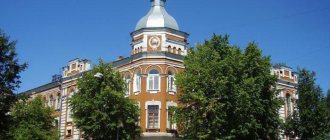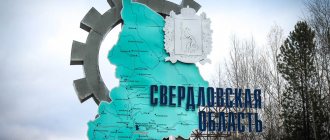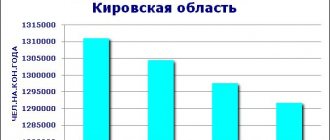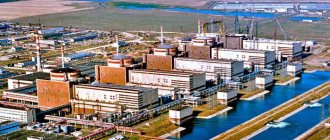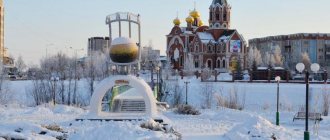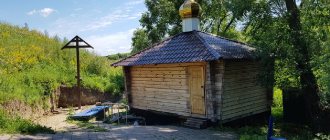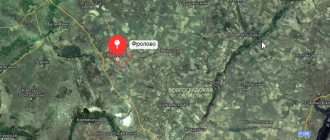Tambov region is a subject of the Russian Federation. Its area is about 35 thousand square meters. km. It is in 63rd place in the list of regions. It is located in the south of the East European Plain. Awarded the Order of Lenin. In total, more than 1 million people live in the region. In terms of population, it ranks 48th among other regions of Russia. There are a total of 307 municipalities in this region. City districts - 7. The list, which can be viewed below, shows the largest cities in the Tambov region. It is compiled according to increasing population size.
- Kirsanov. About 17 thousand people live here. It ranks 737th in the ranking of Russian cities.
- Uvarovo. As of 2016, just under 25 thousand people live here. It is in 585th place (data current as of January 1, 2015).
- Kotovsk. Industrial satellite of Tambov. The population is more than 30 thousand people. Among Russian cities it ranks 495th.
- Morshansk. The administrative center of the district of the same name. About 40 thousand people live here. In the ranking of Russian cities it occupies 395th position in terms of population.
- Rasskazovo. It is a regional center. As of 2016, almost 45 thousand people live in it, ranking 354th.
- Michurinsk. In terms of population, it is second only to Tambov. In 2016, according to the census, the number of residents is almost 95 thousand people. In Russia it is in 181st place.
- Tambov. It is the administrative center. It is home to about 290 thousand people. If we compare other cities in the Tambov region, Tambov is the largest. In Russia it ranks 68th.
In addition to urban districts, there are also municipal districts, urban and rural settlements.
Zherdevka
There are 8 cities in the Tambov region. 7 of them are listed above. The last one is the town of Zherdevka. It forms an urban settlement. Currently, about 15 thousand people live in it. If we compare other Russian cities by population, Zherdevka is in 808th place. Since 2000, there has been a sharp decline in the number of residents. Over 16 years, this figure amounted to almost 4,000. Before receiving city status in 1954, Zherdevka was called the village. Chibizovka. At this time, about 10 thousand people already lived here. If we compare other cities in the Tambov region, this one is considered the smallest.
Uvarovo
When talking about the cities of the Tambov region, one cannot remain silent about Uvarovo. It occupies an area of 23 square meters. km. City status was received in 1966. It is located on the right bank of the Vorona River. The distance from Tambov to Uvarov is more than 110 km. Over the past 10 years, the population has decreased by more than 4,000. As of 2016, 24.5 thousand people live here. Currently, there are two factories operating in the city - an oil mill and a sugar mill, as well as the Granit-M organization (considered one of the best in Russia). There were other businesses here previously, but they are currently closed. These are brick, vegetable drying, chemical and oil factories.
Population in municipal, urban areas
Tambov is located on the Tsna River (Oka basin).
The city was founded in 1636 as a fortification, for the construction of which a place was chosen on the Tsna River opposite the mouth of the Tambov River (now Lesnoy Tambov).
However, the initially chosen location turned out to be inconvenient and the city was built 20 versts lower along the Tsna, but retaining the name according to the original landmark of the Tambov River.
The climatic conditions of Tambov are determined by its geographical location. The climate is moderate continental, with clearly defined seasons.
Now we will tell those interested in the climate in the city of Tambov, what the average temperature was according to research over the past few years, the maximum and minimum values, as well as the average and norms of precipitation:
Climate of Tambov (weather, precipitation)
| Index | Jan. | Feb. | March | Apr. | May | June | July | Aug. | Sep. | Oct. | Nov. | Dec. | Year |
| Avg. Max. | −4,5 | −4,3 | 1,6 | 13,2 | 20,9 | 24,4 | 26,5 | 25 | 18,5 | 10,2 | 1,2 | −3,5 | 10,8 |
| Avg. pace. | −7,5 | −7,9 | −2,4 | 7,5 | 14,5 | 18,4 | 20,4 | 18,7 | 12,7 | 6,1 | −1,4 | −6,3 | 6,1 |
| Avg. min. | −10,5 | −11 | −5,8 | 2,7 | 8,7 | 12,9 | 14,9 | 13,2 | 8,1 | 2,8 | −3,7 | −9,1 | 1,9 |
| Norm of siege. | 37 | 31 | 27 | 26 | 42 | 72 | 54 | 44 | 53 | 46 | 45 | 41 | 518 |
Whether the population of the city of Tambov is decreasing or increasing, what is its official number according to the census as of January 1, 2022, in its municipalities, urban areas, we will learn about this later, when accurate information appears, but for now we will present the currently available figures.
Date of foundation of Tambov: 1636
Time zone: MSK, UTS +3
Kotovsk
Kotovsk (Tambov region) was founded in 1914. It forms an urban district. It received city status in 1940. It is located on an area of about 17 square meters. km. It is located very close to the administrative center of the region - Tambov. The distance between these cities is 15 km. Currently, 30.7 thousand people live here. At the end of the twentieth century, the population began to decrease. Since 1996, the number of residents in the city has decreased by approximately 8,000. Kotovsk (Tambov region) is developing in four main industrial areas: mechanical engineering, food, chemical and light industry. In total, there are 7 enterprises in the city, and there is also its own thermal power plant. Currently there are three schools, a boarding school, an industrial technical school, a polytechnic college and creative houses.
TAMBOV
TAMBOV, city in Russia, adm. center of Tambov region Us. 288.9 thousand people (2015). Located on the river. Price and its channel. Junction of railways and roads. Airport (Donskoye village).
Photo by D.V. Solovyov Tambov. House of M.V. Aseev. 1903–06. Architect L. N. Kekushev.
Founded on April 17 (27), 1636 as a fortified city by governor R. F. Boborykin by decree of Tsar Mikhail Fedorovich on the ancient Ordobazaar road during the construction of the defense. lines in the south Rus. state The fortress was erected by October 1 (10). Since 1636 the center of the county. In 1647, the Tambov Wall was built near Tashkent (length approximately 50 km; the longest earthen structure in the south of the Russian state). According to the description of 1659, the fortifications of T. were divided into a “city” and a fort, and had 24 towers (including 5 road towers). In the 17th century was formed as a regional trade center. Constantly subjected to raids by the Crimean Tatars and Nogais. In 1670 it was besieged twice by rebels during the Razin uprising of 1670–71. In 1695 T. was one of the centers for collecting Russians. troops before the 1st Azov campaign. In April 1708 withstood the siege of the detachment of Ataman L. M. Khokhlach during the Bulavin uprising of 1707–09.
A district town (from 1708), in fact the center of the province (1711–15) and the center of the province (from 1719) of the Azov (from 1725 Voronezh) province (1708–79). In 1724 the tree burned down. fortress. Center of the Tambov province (1779–1928; until 1796 Tambov governorship). From the end 18th century the industry developed, to the beginning. 20th century acted St. 30 enterprises. The largest annual Tithe and Kazan fairs in the province took place in Tashkent. Railway traffic is open. lines Kozlov - Tambov (1869), Tambov - Umet (1870), Tambov - Balashov (1894).
Sov. authority established by 31.1(13.2). 1918. In June 1918, during the mobilization rebellion. peasants and part of the townspeople, the city was captured by the rebels for 2 days. 18–21.8.1919 occupied by white troops during the Mammoth raid of 1919. The headquarters for the suppression of the Tambov uprising of 1920–21 was located in the city. Center of the Tambov-Prigorodny (from 1930 Tambov) district (from 1928), district city (1928–30) of the Central Chernozem Region. (1928–34), Voronezh region. (1934–37). Since 1937 the center of the Tambov region. Since the 1960s developed as a large industrial center.
The old part of the city with a regular layout (according to the general plan of 1781) is located on the left bank of the river canal. Price On the embankment there are preserved: Pokrovskaya Ts. type “octagon on quadrangle” (1763–68), seminary building (1785–1798; rebuilt), Kazan men's monastery. (1667, closed in 1918, reopened in 1992) from the former. Bishop's House (1788–90), summer 5-domed Cathedral of the Kazan Icon of the Mother of God (1791–96), winter church. St. John the Baptist (1794–1821) and the bell tower (2009–2011). Ensemble of Cathedral Square. (on the site of the fortress) consists of the 5-domed Spaso-Preobrazhensky Cathedral (1784–93, based on 1693–99; vestibule 1839–1841), a post office (1786, rebuilt) and residential buildings from the 19th–20th centuries. To the north of the city center is the Voznesensky Women's Monastery. (1690, closed in 1918, revived in 1992; Ascension Cathedral, 2007–12, on the site of the 1791–96 temple; church of the icon of the Mother of God “Joy of All Who Sorrow,” 1816–1820). In the style of classicism - the houses of the merchant A. Tolmachev (until 1786), N. Ya. Lukyanenko (early 19th century; now the Museum of the History of Medicine of the Tambov Region); Gostiny Dvor (1836–37; reconstructed in 1956–1959), etc. In the middle. 19 – beginning 20th centuries in decomposition styles were built: Alexandrinsky Institute of Noble Maidens (1839–43, architect A.P. Bryullov; now one of the buildings of the University named after G.R. Derzhavin), K. Gaken’s pharmacy (1870s), building for bunks readings (the so-called Naryshkin reading room, 1891–92, architect A. S. Chetverikov; since 1983 an art gallery), Noble Assembly in the spirit of neo-baroque (1892–97, architect F. A. Svirchevsky; now a drama theater) , neo-Gothic Catholic c. Exaltation of the Cross (1898–1903), provincial zemstvo government in the style of neoclassicism (1913–1914; now Technical University). Among the buildings in the Art Nouveau style: Muz. school (1902–03, architect Svirchevsky; now the Musical Pedagogical Institute named after S. V. Rachmaninov), the P. I. Mikhailov hotel (1906; now the Regional Duma), the Modern cinema (1908 ), buildings of the Noble Land and Peasant Land Banks (1910–11, architect F. O. Livchak; now one of the buildings of the G. R. Derzhavin University), state. bank (1911–13).
In the style of owls. of neoclassicism were erected: the cinema "Rodina" (1938–41), the House of Political Education (1954, architect V. G. Samorodov; now the Museum of Local History), Trinity Church. (2008–10). Monuments: M. Yu. Lermontov (1941, sculptor M. D. Ryndzyunskaya), Z. A. Kosmodemyanskaya (1947, sculptor M. G. Manizer), V. S. Petrov (1953, sculptor L. E. Kerbel), S. N. Sergeev-Tsensky (1975), S. V. Rachmaninov (2006), military. musicians I. A. Shatrov and V. I. Agapkin (2015); memorial “Grieving Mother” (1975), etc.
Among scientific institutions of T. - Research Institute of Agriculture (history dates back to 1912, the name and status have changed several times, the current name and status since 1991), the Research Institute of Radio Engineering "Efir" (1955). State universities: Music-pedagogical Institute named after S. V. Rachmaninov (current name and status since 1996), Univ. G. R. Derzhavina (1918–21; re-created in 1994; it included the Museum and Exhibition Complex, 2006, Zoo, 2005), Technical. University (current name and status since 1993). Regional universal scientific. fuck them. A. S. Pushkin [successor of the public (1830) and Naryshkin special (1894) libraries], Centralized Library System (1976; 21 branches). Museums: Regional Local History Museum (1879; current name and status since 1937), among its branches is the Museum of the History of Medicine of the Tambov Region. (1978), House-Museum of G. V. Chicherin (1987), Museum and Exhibition Center of the Tambov Region. (2010); Museum of the History of the Tambov Diocese (2004); Room-museum of A. N. Lodygin. Regional CG (1918; modern name and status since 1961). Historical and cultural museum complex “The Aseev Estate” (2014; in the former house of the manufacturer M. V. Aseev, 1903–06, architect L. N. Kekushev). Planetarium (2001).
Theatres: puppet theater (1934) and drama. (1937; since 2006 both are part of the Tambov regional state autonomous cultural institution “Tambovtheater”), Molodezhny (2009). State establishment of the Tambov Concert (2000) - the successor of the Tambov Regional Philharmonic (1938), with a Concert Hall (opened in 1967, architect V. G. Samorodov; since 2012 under reconstruction). As part of the “Tambov Concert”: Tambov Symphony. orchestra (1997), Russian orchestra. adv. instruments "Russians" (founded in 1991, part of the Philharmonic since 1999), etc. State. academician song and dance ensemble “Ivushka” (1968). Tambov Chamber Choir (1993, since 1996 named after S.V. Rachmaninov). Intl. festivals: music festivals named after S. V. Rachmaninov (since 1982, annually), in memory of V. K. Merzhanov (a native of T.; since 2013), “Days of Germany in Tambov” (since 2005); puppet theaters “Legends of Deep Antiquity” (since 2014). All-Russian theater festival named after N. Kh. Rybakova (since 2007, annually). Interregional choral festival “Songs over Tsnoi” (since 2013, annually).
Among the many sports facilities - football stadium "Spartak" (8 thousand seats), ice - Sports Palace "Crystal" (about 1 thousand seats) and arena "In Raduzhny" (over 800 seats), ski stadium in the Druzhba forest park , Sports Palace “Martial Arts Center”, etc.
The largest industrial center of the region. The most developed are mechanical engineering (instrument making, production of industrial equipment, etc.), chemical engineering. and food industry. Basic instrument maker. enterprises (all within the concerns of the state corporation Rostec): the Revtrud plants (special communication equipment), Tambovapparat (short-wave transmitting radio stations and other communication equipment), Oktyabr (stationary and mobile communication equipment) , Radio Engineering Research Institute "Efir" (R&D in the field of radio transmitting devices, control and switching systems, etc.), Elektropribor plant (various devices for aviation equipment, etc.). Among the leading enterprises are also the following factories: Komsomolets named after. N. S. Artyomova (capacitive, heat exchange, column equipment for the food, oil and gas, chemical industries), Tambovpolimermash (industrial equipment, including oilfield equipment, for tire factories), Agrotekhmash - T ( assembly production of TERRION wheeled tractors, agricultural equipment), car repair, sliding bearings; "Tambovgalvanotekhnika" named after S.I. Livshits (as part of the ARTI group of companies; automatic and mechanized lines and other equipment for applying galvanic, chemical, anodization coatings); experimental design technological bureau (fire-fighting equipment, installations for disinfection of drinking water, etc.); a number of enterprises producing respiratory protection equipment (Tambovmash, ARTI-Zavod, Roskhimzashchita Corporation, etc.). A large manufacturer of dyes, pigments, paints and varnishes is the Pigment company. Production of rubber products products (“ARTI-Rezinoplast”), building materials, furniture. Light industry enterprises. In the food industry, the production of confectionery products (including the confectionery company TAKF), meat and dairy products is of greatest importance. Thermal power plant (235 MW).
Morshansk
The fourth largest city in terms of population is Morshansk. Situated on an area of almost 19 square meters. km. Previously it was considered a center of grain trade. Until 1779, the modern city of Morshansk in the Tambov region was considered a village. It was called Morsha. However, by decree of Catherine II, the village was transformed into a district town. Currently, almost 40 thousand people live in Morshansk. The food, tobacco, chemical, and cloth industries are developed here. Construction materials are also produced and a locomotive depot operates. Located north of Tambov at a distance of 90 km.
Rasskazovo
The town of Rasskazovo, Tambov region, was founded in 1697. The village became famous thanks to a peasant who received a royal charter. Residents were mainly engaged in knitting stockings, soap production and leather tanning. In 1744, a distillery began operating, and in 1754, a cloth production began. Thanks to the rapid development of industry, the village began to gradually expand. City status was awarded in 1926. Currently, the area of Rasskazovo is slightly more than 36 square meters. km. In 2016, the number of residents decreased to 44.2 thousand people. It is worth noting that the largest population was almost 51,000 in 1990. Rasskazovo is an industrial satellite town of Tambov.
Michurinsk
The city of Michurinsk in the Tambov region is the second most populous city in the region. It received its modern name in 1932. Previously it was called Kozlov. It was founded in 1635. The modern city occupies an area of 78 square meters. km. Awarded the Order of the Badge of Honor. At the beginning of the 21st century, the population was more than 120 thousand people. However, after 15 years, you can see a significant decrease in the number of residents by almost 25,000. According to the 2016 census, only 94,741 people now live permanently in the city. The city of Michurinsk, Tambov region, is an industrial and cultural center, an important railway junction. For achievements in the agro-industrial complex, it was awarded the status of a science city of the Russian Federation.
Population census of Tambov, how many people live on January 1?
What is the official population of Tambov for 2022, how many people live according to the census, how many people are in urban areas as of January 1, trends in profit and loss, whether their number is increasing or decreasing, such questions are of interest to many and we will try to get answers to them.
The city of Tambov with all its administrative districts is part of the Russian Federation, the administrative, economic and cultural center of the Tambov region.
We will look into the population of the city of Tambov, how many people live as of January 1, 2022, and how many people officially live in urban areas.
Tambov
The most important industrial, cultural and economic center is the city of Tambov. It is the largest in the region. Occupies an area of more than 90 square meters. km. Awarded the Order of the Red Banner of Labor. Currently, almost 290 thousand people live in it. Unfortunately, the city's birth rate is lower than its death rate. That is why the population is gradually decreasing. Main economic sectors: mechanical engineering, technical services, light, food and chemical industries.
Population gain or loss according to the census
The total and official population of the city of Tambov, how many people live in it as of January 1, 2022, the number of people in each individual city district and municipality, further in the second table.
| Year | Growth/decrease population city of Tambov |
| 2017 | ↗290,365 people |
| 2018 | ↗293,661 people |
| 2019 | ↘291,663 people |
| 2020 | ↗292,140 people |
| 2021 | ↘289,701 people |
| 2022 |
